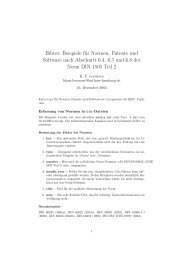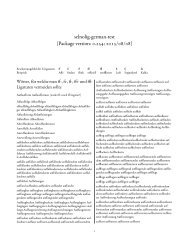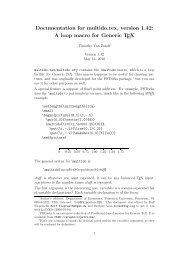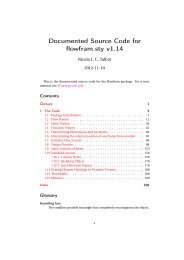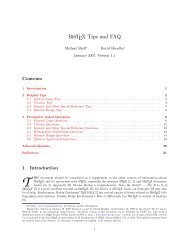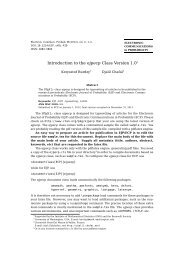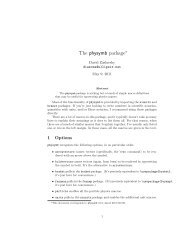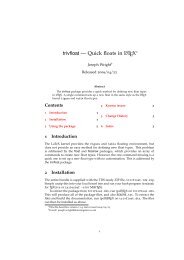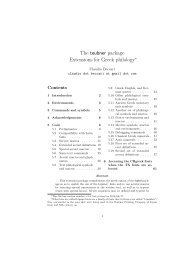Sanskrit for LATEX2ε Version 2 - CTAN
Sanskrit for LATEX2ε Version 2 - CTAN
Sanskrit for LATEX2ε Version 2 - CTAN
You also want an ePaper? Increase the reach of your titles
YUMPU automatically turns print PDFs into web optimized ePapers that Google loves.
combinations au and ai which the encoding scheme defines as single vowels,<br />
producing <strong>for</strong> example), there are three ways to fool the pre-processor;<br />
only the first of these is carried through to the transliteration modes:<br />
{\skt a{}iu.n| .r.lk| eo"n| aiauc|| pra{}uga pra{uga} pra%<br />
uga||}<br />
Note that, <strong>for</strong> the third method, there must be a newline immediately after<br />
the % — this is the TEX line continuation method.<br />
<br />
a.i.un. | r. .l.k | e.o˙n | ai.auc || pra.uga prauga prauga ||<br />
The same trick may be used to split any multicharacter input, provided that<br />
what is either side of the {} is still valid, <strong>for</strong> example:<br />
{\skt tha t{}ha} produces .<br />
· · · · · · · · · · ·<br />
Some L ATEX commands are ‘fragile’ and balk at having skt commands<br />
within their arguments, e.g. \section{\skt bahuvriihi} produces the<br />
error message Undefined Control Sequence. To get around this sort of<br />
problem, define the skt argument outside the fragile command, e.g.<br />
\newcommand{\bahuvriihi}{\skt bahuvriihi}<br />
\section{\protect\bahuvriihi}<br />
· · · · · · · · · · ·<br />
Finally, the simplest method of producing larger sizes of the font is to add<br />
the command \font\bigskt=skt10 at 46mm <strong>for</strong> example, in the preamble<br />
to the document, and then use {\skt \bigskt tattvamasi} in the text<br />
body. The result (in ‘lightgray’ to save ink) is:




